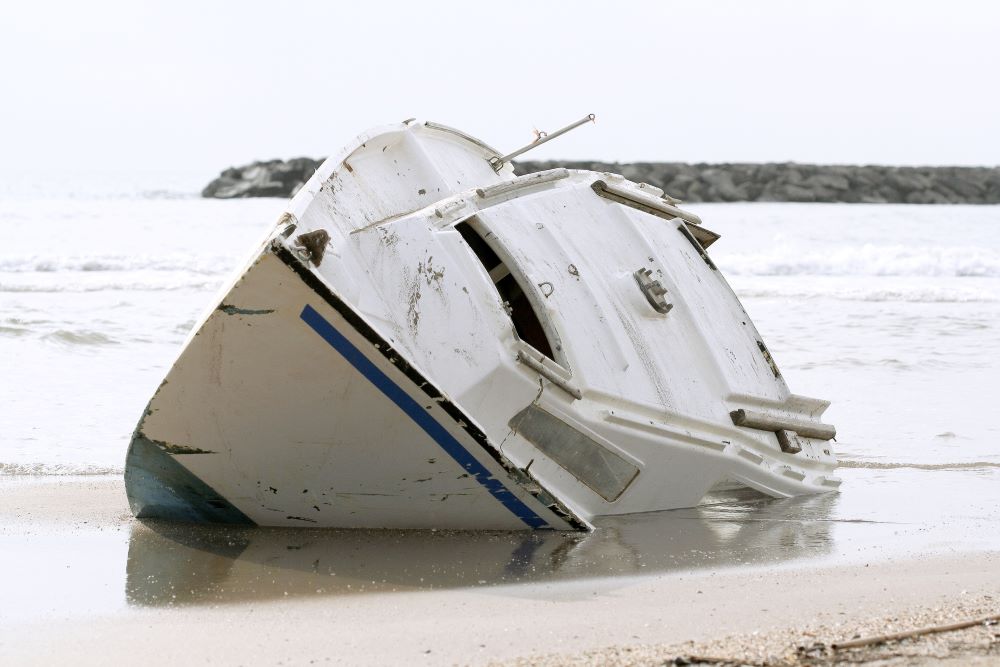
What to do if your boat runs aground
Running aground is one of the most common boating accidents. Largely due to poor nautical chart reading, shallow waters and uncertain weather conditions, these accidents can happen in a matter of seconds. Should you find yourself in this situation, the National Boating Safety School explains what to do when your boat runs aground.
1. Assess for any injuries
Weather conditions and strong winds that caused your boat to run aground may have also injured your crew and passengers. Once aground, it is important the operator of the boat ensure the safety of all people on board. If any passengers are injured, you should immediately contact the Transport Canada navigation authorities and the Canadian Coast Guard.
2. Signal your position
Whether or not anyone is injured, you will need to report the position of your stranded vessel in order to receive assistance and be towed away as soon as possible.
This requires that you have a Personal Locator Beacon (PLB) included in your boating safety equipment. You will need to follow the instructions on the beacon to signal your position to the appropriate authorities or nearby vessels.
3. Secure all people on board
While you are waiting for help, make sure you are safe by taking cover or protecting yourself as much as possible. Ask all passengers to wear their life jackets. Keep an eye on injured persons and reassure them until help arrives.
4. Check your boat for damage
Once everyone is safe and wearing their life jackets, you will need to determine the damage to the boat. In most cases, running aground primarily impacts the hull of the boat. If not too badly damaged and if the owner has the tools, you can try to repair the boat hull on the spot.
On the other hand, if the damage is too extensive and difficult to fix, you should wait for the rescue team to reach you.
5. Try to free your grounded boat
When the tide goes out, if you don’t see any damage, you can try to free your boat to get your passengers to safety and repair it. Here are some tips for freeing a grounded boat:
- Reverse: This can be attempted when the boat’s hull has not touched the bottom for a long distance. In this case, you need to shift your weight to the part of the boat that is not submerged and try to reverse the boat using your engine.
- Manually push the boat: If reversing the boat did not work, you can try pushing it back into the water. This means shifting your weight to an area above water and then pushing your boat.
- Use a kedge anchor: This is a type of anchor used for running aground. For this, you should move the anchor into deep water so that it can free the boat. Remember to wear your PFD or attach a buoyant heaving line to stay safe.
Boat safely with the National Boating Safety School
Running aground is a common situation for boat captains to encounter during navigation due to unpredictable weather conditions, even if they are familiar with reading an accurate nautical chart.
To best understand what to do if you run aground, the National Boating Safety School offers an online boating safety course to obtain your boat license. Register now to prepare for the online boating exam and start learning how to drive a boat safely.

